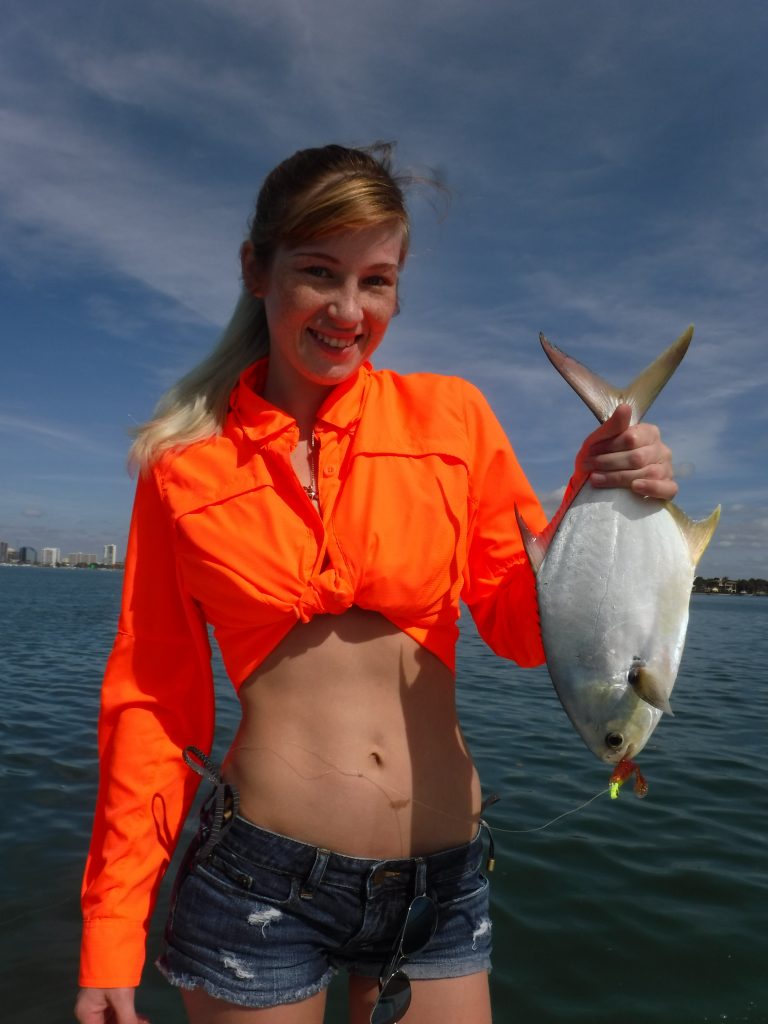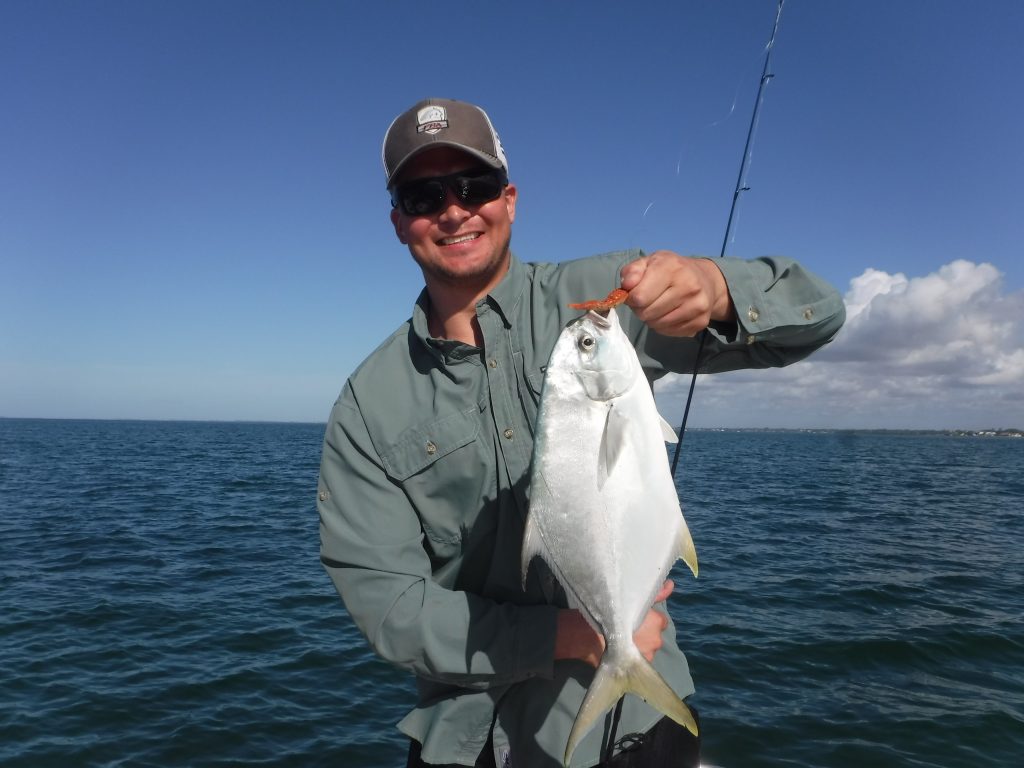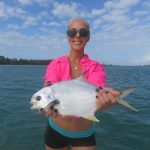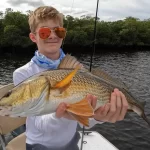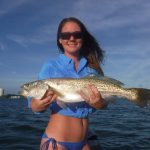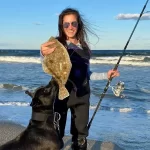11 Effective Pompano Fishing Tips!
This post will list 11 effective pompano fishing tips. Pompano are a very popular inshore saltwater species. They are found along the Gulf of Mexico coast and up the east coast to North Carolina. Pompano do not grow large, 2 pounds is average, but they put up a great battle. Finally, pompano are one of the finest eating fish that swims, with a unique texture and flavor!
Capt Jim Klopfer is a fishing guide in Sarasota, Florida. Pompano are highly prized by his clients. Capt Jim shares over 30 years of experience chasing pompano in this article featuring these pompano fishing tips.
The 11 effective pompano fishing tips are;
-
Pompano feed right on the bottom
-
Jigs are the top pompano fishing lure
-
Surf fishing for pompano is very popular
-
Passes and inlets are prime pompano fishing spots
-
Drifting the flats works well in the inshore bays
-
Pompano school up tightly
-
Skipping pompano to locate them on the flats
-
Pompano can be caught by anglers fly fishing
-
Commercial baits will catch pompano
-
Differences between pompano and permit
-
Pompano are fantastic to eat
These 11 effective pompano fishing tips will help anglers catch more of these tasty saltwater game fish, no matter what the area or environment that is being fished.
Pompano feed right on the bottom
One look at a pompano will show anglers how it feeds. Pompano have an inferior mouth. That means it is below and behind the nose. Pompano root along the bottom with their tails up searching for crabs, shrimp, and other crustaceans. They also have a hard nose which aids in this behavior.
As a result, most pompano are caught by anglers presenting their lures and baits right on the bottom. Standard high/low bottom rigs work well in the surf and when vertically fishing. Anglers using lures keep them right on or near the bottom as well.
Jigs are the top pompano fishing lure
Jigs are by far the most popular and effective artificial lure for pompano. Capt Jim catches the vast majority of his pompano using these baits. As explained in the first pompano fishing tip, they feed right on the bottom. As the jig is bounced, it kicks up sand, mimicking a fleeing crab or shrimp.
There are several jigs that are specifically designed for pompano fishing. Pompano have small mouths and smaller jigs work well. They are heavy and compact, sinking quickly to the bottom. Another style is called a “banana jig”. It looks odd, but has a terrific action in the water. Most come with a teaser as well.
Jigs work well when both cast out and retrieved as well as vertically fished. Anglers fishing from shore will catch fish as well. It is crucial that the jig is allowed to sink to the bottom and then worked on or near the bottom. A 7” spinning rod with a 2500 series reel and 10 lb line is a great all round combination. Anglers can tip the jig with a small piece of shrimp to add a little scent as well.
Surf fishing for pompano is very popular
One great aspect of pompano fishing is that anglers do not need a boat to catch them. Some of the best action is found right off of the beach. Surf fishing for pompano is fun and productive! On the gulf coast, anglers find them close to shore in the first trough. Jigs and live bait work well.
Anglers surf fishing for pompano in the Atlantic Ocean fare better with standard surf fishing tackle. Long rods and heavier tackle is required to get the baits out far enough. Bottom fishing is the most practical and effective technique. Sand fleas are a top bait, but shrimp and commercial baits will also catch fish.
Passes and inlets are prime pompano fishing spots
Inlets are the most reliable places to catch pompano in most inshore fishing situations. A “pass” is just another name for inlet, used on the Gulf coast. Capt Jim catch most of his pompano in the passes in Sarasota, where he fishes. These are natural feeding spots as the current brings forage to the game fish.
The top technique when pompano fishing in passes and inlets is to vertically fish with jigs as the boat drifts along with the tide. This is extremely efficient as it keeps the lure in the strike zone the entire time. Once pompano are located, that area can be drifted over and over. Areas with shell or rocky bottom are often the best place to fine them.
Drifting the flats works well in the inshore bays
Drifting the flats while casting jigs or live bait is the best technique to catch pompano in the inshore bays. Generally, water depths from 2′ to 10′ are best, with a mix if sand, shell, and grass. Pompano move around a lot and anglers must first find them in order to catch them. Jigs and live shrimp are the best baits to use.
Pompano school up tightly
Pompano are usually found in schools or even small pods. They tend to bunch up and feed close together. Pompano also move around more that a lot of other species. Once a fish is caught, anglers should concentrate on that area. This is true in the inlets, bays, and out on the beaches.
Skipping pompano to locate them on the flats
Pompano exhibit an unusual behavior; they “skip” when startled. Every anglers skipped flat stones across a pond as a youngster. Pompano do the same thing when frightened, they turn sideways and “skip” across the surface. Anglers can use this to locate them. The boat can be idled along, or even run on plane, and once pompano are seen skipping on the surface, that area can be thoroughly fished.
Pompano can be caught by anglers fly fishing
Pompano will take a well presented fly. The key when fly fishing for pompano is getting the fly down deep enough in the water column. In most cases, this means fishing for them on flats in 8′ of water or less. Sinking lines, shorter leaders, and weighted flies will get the job done. A 7wt outfit works fine and a chartreuse/white Clouser is tough to beat.
Commercial baits will catch pompano
There are several manufacturers that offer anglers another option when it comes to baits. These are commercial baits that are available at tackle shops. Fishbites is the most popular example, but there are others as well. They are convenient and stay on the hook much better than natural baits. Also, these baits can be cut into whatever size or shape the angler desires. They are especially popular among anglers surf fishing for pompano.
Differences between pompano and permit
Pompano have a cousin that looks very similar to themselves; permit. While they do look a lot alike, there are differences, the primary one being longer fins with black on them. While limits are similar, many anglers release small permit as they have the chance to grow much larger. A permit is pictured above, to show the differences.
Pompano are fantastic to eat
While pompano put up an incredible fight for their size, many anglers prize them for their fillets. This is quite understandable, pompano are Capt Jim’s favorite fish to eat. They are oily, but in a good way, kind of like salmon or mahi. They are best prepared broiled or grilled as opposed to frying. Also, they do not freeze as well, so best just to keep enough for a fresh meal or two.
In conclusion, this article on 11 effective pompano fishing tips will help anglers catch more of these terrific and beautiful fish!
